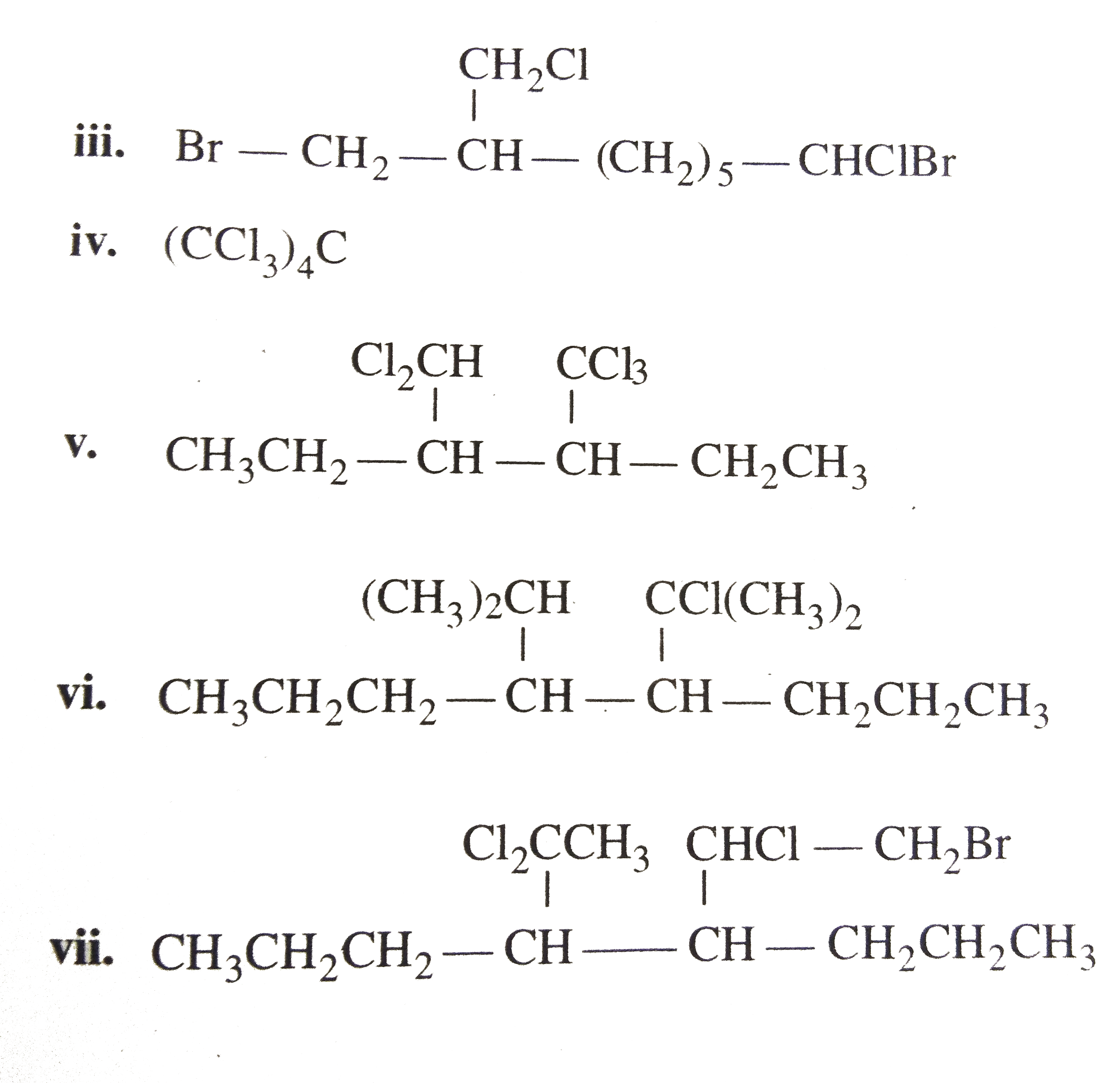The compounds that will give an isomer of 2, 2-dimethyl propane on catalytic hydrogenation are
(1) CH3CH=C∣CH3−CH3
(2) CH3CH=CHCH3
(3) CH3H∣C=CHCH2CH3
(4) CH3C∣CH3=CCH3CH3−CH3
1 and 4
2 and 4
1 and 3
1 and 2
The correct Answer is:C
To determine which compounds will yield an isomer of 2,2-dimethylpropane upon catalytic hydrogenation, we need to analyze each given compound.
1. Identify the structure of 2,2-dimethylpropane:
- The molecular formula for 2,2-dimethylpropane is C5H12. It has a central carbon (C) bonded to two methyl groups (CH3) and two other carbons, making it a branched alkane.
2. Analyze each compound:
- (1) CH3CH=CH(CH3)CH3:
- This compound is 2-methylbut-2-ene. Upon catalytic hydrogenation, the double bond will be converted to a single bond, resulting in 2,2-dimethylpropane (C5H12).
- (2) CH3CH=CHCH3:
- This compound is but-2-ene. Upon hydrogenation, it will yield butane (C4H10), which is not an isomer of 2,2-dimethylpropane.
- (3) CH3C(H)=CHCH2CH3:
- This compound is 3-methyl-1-pentene. Upon hydrogenation, it will yield 2,2-dimethylpropane (C5H12) as well.
- (4) CH3(CH3)C=CH(CH3)C−CH3:
- This compound is 2,3-dimethylbut-2-ene. Upon hydrogenation, it will yield 2,2-dimethylpropane (C5H12) as well.
3. Conclusion:
- The compounds that will yield an isomer of 2,2-dimethylpropane upon catalytic hydrogenation are (1), (3), and (4).
Final Answer:
The correct options are (1), (3), and (4).
---
- The molecular formula for 2,2-dimethylpropane is C5H12. It has a central carbon (C) bonded to two methyl groups (CH3) and two other carbons, making it a branched alkane.
- (1) CH3CH=CH(CH3)CH3:
- This compound is 2-methylbut-2-ene. Upon catalytic hydrogenation, the double bond will be converted to a single bond, resulting in 2,2-dimethylpropane (C5H12).
- (2) CH3CH=CHCH3:
- This compound is but-2-ene. Upon hydrogenation, it will yield butane (C4H10), which is not an isomer of 2,2-dimethylpropane.
- (3) CH3C(H)=CHCH2CH3:
- This compound is 3-methyl-1-pentene. Upon hydrogenation, it will yield 2,2-dimethylpropane (C5H12) as well.
- (4) CH3(CH3)C=CH(CH3)C−CH3:
- This compound is 2,3-dimethylbut-2-ene. Upon hydrogenation, it will yield 2,2-dimethylpropane (C5H12) as well.
- The compounds that will yield an isomer of 2,2-dimethylpropane upon catalytic hydrogenation are (1), (3), and (4).
The correct options are (1), (3), and (4).
Topper's Solved these Questions
- HYDROCARBONSBOOK - ERRORLESSCHAPTER - HYDROCARBONSEXERCISE - NCERT BASED QUESTION (ALKYNE)
67 Videos
- HYDROCARBONSBOOK - ERRORLESSCHAPTER - HYDROCARBONSEXERCISE - NCERT BASED QUESTION (AROMATIC HYDROCARBON)
78 Videos
- HYDROCARBONSBOOK - ERRORLESSCHAPTER - HYDROCARBONSEXERCISE - ASSERTION & REASON
18 Videos
- GENERAL ORGANIC CHEMISTRY BOOK - ERRORLESSCHAPTER - GENERAL ORGANIC CHEMISTRY EXERCISE - ASSERTION AND REASON
14 Videos
- HYDROGENBOOK - ERRORLESSCHAPTER - HYDROGENEXERCISE - ASSERTION & REASON
6 Videos
Similar Questions
Knowledge Check
The IUPAC name of CH3−CH3∣C∣CH3−CH∣CH3−CH∣I−CH2−CH3 is:
A3-Iodo-4,5,5-trimethylhexaneB4-Iodo-1,1,3-trimethylhexaneC4-Iodo-2,2-dimethylheptaneD4-Iodo-2,2,3-trimethylhexaneThe IUPAC name for
CH3−CH∣OH−CH2−CH3∣C∣OH−CH3 is:A1, 1-Dimethylbutane -1, 3-diolB4-Methylpentane-2, 4-diolC2-Methylpentane-2, 4-diolD1, 3, 3-Trimethylpropane-1, 3-diolAmong these chain isomers are :
(I) CH3−CH3−CH2−CH2−OH
(II) CH3−CH2−CH∣OH−CH3
(III) CH3−OH∣C∣CH3−CH3AI onlyBI and IIICI and IIDNone of these
CH3−C∣ClH−C∣IH−CH3
CH3−C∣CH3H−(CH2)4−C∣CH3H−C∣BrH−CH2CH3


View SolutionWrite its IUPAC name
CH3−CH∣CH3−CH2−CH3∣C∣CH2−CH3
View SolutionCH3−CH2−CH2−C∣OHH−CH3 and CH3−CH2−C∣OHH−CH2−CH2−CH3 are
View SolutionCH3−CH∣CH3−CH=CH−CH2−O∣∣C−OH
View SolutionThe IUPAC name of the compound
CH3−C∣CH3−C∣∣CH2−CH2−CH3
is
View Solution
